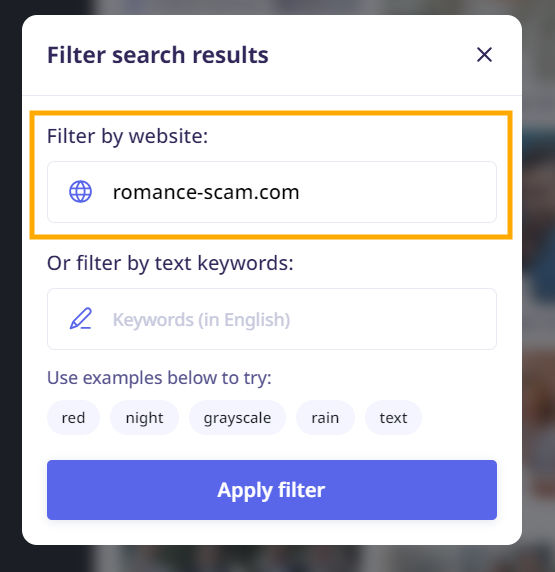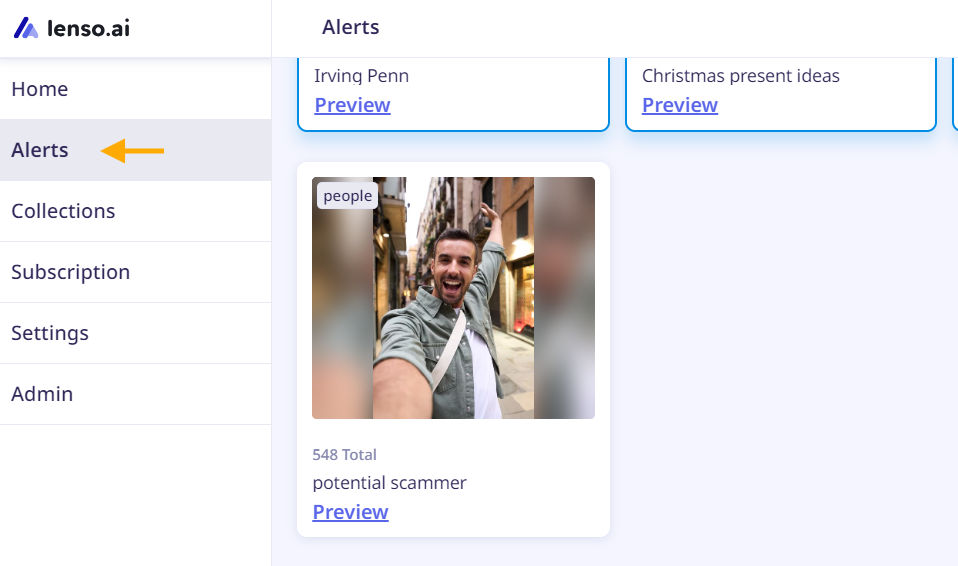
Preview in:
Common Romance Scams on Valentine’s Day
Scammers exploit people's vulnerability, especially those who may be spending Valentine’s Day alone. Here are some of the most common scam tactics:
- Unexpected love confessions – expressing strong emotions too soon to gain trust.
- From love to financial requests – quickly shifting from romantic talk to asking for money due to an "emergency."
- Avoiding in-person meetings – constantly rescheduling or refusing to meet.
- Phishing attempts – asking for delivery details or sending fake pages that request personal information (e.g., emails pretending to be from a "dating app").
- Fake gifts with extra fees – claiming they sent you a present but need you to pay extra for delivery, taxes, or customs.
- AI Deepfakes – someone famous wants to chat with you or send you videos.
And there are likely many more scams out there. If something feels suspicious, strange, or just doesn’t add up — double-check it.
All you need is a photo of the potential scammer to start investigating.
How can you find someone with a picture?
Spot Romance Scams with a Face Search Tool
Thanks to reverse face search tools like lenso.ai, you can safely check whether your Valentine’s date is a potential scammer. Simply upload an image to lenso.ai and check the People category.

You can then see where the image of a particular person appears online. If the same image is found on multiple sources, you can compare information to verify its authenticity. It’s best to check different images across various sources, as scammers often use different pictures on different platforms.

If someone insists on anything urgently (money transfer, sharing some personal information) it may be a sign that they are running out of time—perhaps because they are already being exposed.
To investigate further, you can sort your image results on lenso.ai by "newest" to check the latest online appearances of the image. Alternatively, sorting by "oldest" lets you see when the first record of the person appeared. You can also sort by:
- best/worst match
- random
- show diverse results
If you are aware of specific websites or forums that publish information about potential fraudsters, you can filter by those websites on lenso.ai to check for any matches.

Another useful option is setting up an Alert for a specific image. This way, you'll receive an email notification when new image results for that person appear online—an essential feature for long-term investigations. However, patience is key in such cases.

How else can you protect yourself from being scammed?
- Do not accept suspicious invitations on social media or dating apps.
- Avoid clicking on shared links that seem fake or suspicious.
- Never share personal information, credit card details, or other sensitive data.
- Double-check everything before taking action.
- Stay skeptical and aware of potential manipulation tactics.
How to tell you’re being catfished? Most effective tips
Important!
Scammers use sophisticated tactics, so it's wise to ask them to send different pictures of themselves. Later, you can run a reverse image search on lenso.ai with all the images they provided. This increases your chances of detecting a potential romance scammer. If everything checks out — then it's time to prepare for your Valentine’s date!
Continue reading

News
AI Reverse Image Search as a Competitive Intelligence Tool for Ecommerce Brands
Scroll through any ecommerce site today and you’ll see polished product photos everywhere. Those images carry far more information than most brands realize. With AI reverse image search, they turn into a practical source of competitive intelligence.

News
Lenso.ai API | Facial Search and Reverse Image Search API
If you are looking for a face search API or a reverse image search API for your page, tool, or software, lenso.ai’s API is a product for you! Read this article to find out what features lenso.ai’s API offers, and how you can use it in your own application. There were also some changes made for current clients - don’t miss them!

News
Best PimEyes Alternatives & Competitors for reverse face search in 2025
Looking for an accurate facial recognition tool that's not the popular one? Discover and try best PimEyes alternatives and competitors in 2025.

News
Is there a better tool than PimEyes for face search?
You’re probably familiar with PimEyes as one of the most well-known face search tools. Maybe you’ve tried it yourself or just read about it. But is there a better tool than PimEyes to help you find your photos online? Let’s find out.

News
Top 5 Ways to Find Your Leaked Photos Online
If you think the images you uploaded have been shared without your knowledge, or if you suspect someone shared your photos online without your consent, keep reading. In this article, we will show you 5 ways to find your leaked photos online and take them down, as well as how to avoid future leaks.
